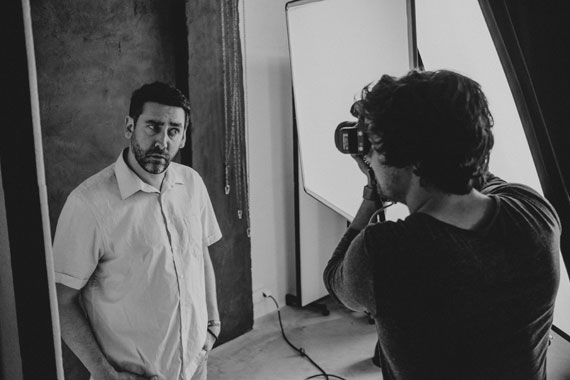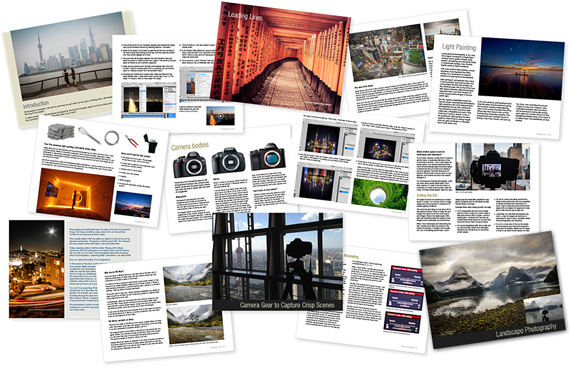In the world of photography, whether you’re a professional or an enthusiast, understanding the impact of horizontal and vertical orientations can greatly influence the quality and storytelling power of your photos. Both orientations offer distinct benefits and can dramatically alter the viewer’s perception of a scene. This blog post delves into the differences between horizontal and vertical photo orientations, helping you decide which is best for various scenarios.
Quick reminder: only a little while left for the Photography eBook Spring Sale

Photo captured by Shelby White
Horizontal Orientation: The Landscape’s Best Friend
Horizontal, or landscape, orientation is perhaps the most common way to capture photographs, especially in landscape photography. This orientation naturally aligns with the way human eyes perceive the world, offering a wide view that encompasses a lot of a scene. Here’s why and when to use it:
1. Stability and Balance:
Horizontal photos provide a sense of stability and balance, making them ideal for capturing expansive landscapes, group photos, and wide scenes where you want to include as much as possible.
2. Storytelling:
The wider frame of horizontal photos allows for more elements to be included, which can help in telling a more comprehensive story. For instance, a horizontal shot of a beach might include the sand, sea, and sunset, setting a vivid scene.

Photo captured by Eric Ward
3. Cinematic Feel:
Due to their similarity to the aspect ratio used in films, horizontal photos often evoke a cinematic feel, offering a dramatic canvas for showcasing grand vistas or dynamic action scenes.
Vertical Orientation: The Portrait Specialist
Vertical, or portrait, orientation is more specialized but no less powerful. This layout is often used for portraits, fashion photography, and any subject that benefits from a focus on height or depth. Here’s why and when to use vertical orientation:

Photo captured by Daniel Wirtz
1. Emphasis on Subjects:
Vertical photos allow you to emphasize the subject effectively, drawing the eye along the length of the subject, whether it’s a person, building, or tree. This orientation highlights verticality and can make subjects appear taller or more imposing.
2. Depth and Perspective:
Vertical orientation can enhance the perception of depth, making it ideal for shooting in tight spaces or when you want to emphasize foreground elements that lead to the background, adding layers to the composition.
3. Mobile and Social Media Friendly:
With the increasing consumption of content on mobile devices, vertical photos are becoming more popular, especially for social media platforms like Instagram and Snapchat where the vertical layout fits perfectly with the user interface.

Photo captured by Redd F
Making the Choice
Choosing between horizontal and vertical orientation should be guided by the message you want to convey and the elements you wish to highlight. Here are a few tips:
- Consider the End Use: Think about where the photo will be displayed. Horizontal images are great for websites and banners, while vertical images may suit magazine covers or Instagram stories better.
- Experiment with Composition: Sometimes switching the orientation can reveal a more interesting composition or highlight different elements of a scene that you hadn’t noticed before.
- Follow the Lines: Use the natural lines in your scene to guide your choice. Horizontal lines like horizons or streets often suggest a landscape orientation, while vertical lines like trees or skyscrapers might lean towards a portrait orientation.
In conclusion, whether you choose horizontal or vertical orientation can deeply affect the visual impact of your photos. By understanding the strengths of each and considering your photographic goals, you can more effectively capture images that are not only beautiful but also engaging and appropriate for their intended context.
For Further Training:
This #1 bestseller is the most in-depth eBook on how to capture amazing photography anywhere. Over 250 pages of photography tips & tricks from industry insiders. Currently 83% off today for a Spring Sale if you want to check it out.
It is the product of over a DECADE of research as an insider in the photography industry, assembled to help you learn quickly and avoid the mistakes that I made along the way.
Deal ending soon: The Photography Tutorial eBook Spring Sale
- - - - - - - - - - - - - - - - - - - - - - - - - - - - - - - - - - - - - - - - - - - - - - - - - - - - - - - - - - - - - - - - - - - - - - - - - -
Photography, like any art or skill, thrives on consistency. The journey to becoming an adept photographer is paved with regular practice. Learn how PictureCorrect Insiders can help.
- - - - - - - - - - - - - - - - - - - - - - - - - - - - - - - - - - - - - - - - - - - - - - - - - - - - - - - - - - - - - - - - - - - - - - - - - -
This post When to Use Horizontal vs Vertical Orientation for Photos appeared on PictureCorrect.
from PictureCorrect https://ift.tt/rMK0j8e
via IFTTT







0 kommenttia:
Lähetä kommentti